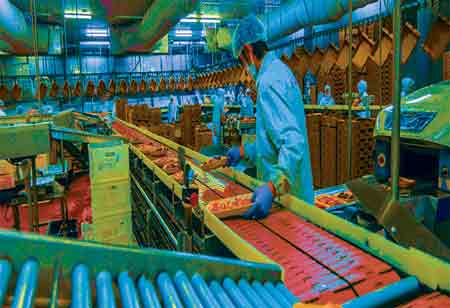Thank you for Subscribing to Food Business Review Weekly Brief
- Home
- Topics
- Alternative Proteins and Plant Based Food
- Beer and Wine
- Canned Beverages
- Coffee And Tea
- Food and Beverage Consulting
- Food and Beverage Financial Service
- Food And Beverages Marketing
- Food Distributors
- Food Ingredients
- Food Sustainability
- Plant Based Food and Beverages
- Seafood Suppliers
- Supplement Manufacturing
- Wine Investment
- News
- Vendor Viewpoint
- CXO Insights
- Conferences
- Newsletter
- CXO Awards
-
Importance of Food Service Distributors
Working with various food service distributors is a wise decision if done correctly. Foodservice distributors distribute natural foods and items used for food consumption, including cups, napkins, utensils, platters, and condiments.

By
Food Business Review | Monday, December 11, 2023
Stay ahead of the industry with exclusive feature stories on the top companies, expert insights and the latest news delivered straight to your inbox. Subscribe today.

The transportation business has drastically changed, and the company must adequately plan to take care of every part of the supply chain.
FREMONT, CA : Working with various food service distributors is a wise decision if done correctly. Foodservice distributors distribute natural foods and items used for food consumption, including cups, napkins, utensils, platters, and condiments. They are developing a path to market for the product through distribution and the significance of understanding how food service distributors operate to save time and money. Foodservice distribution consists primarily of programs, companies, and organizations that collect products from food producers. They transport them to warehouses for storage, then distribute products to grocery stores, manufacturers, cafeterias, restaurants, and government aid programs.
Many food service distributors focus on one type of food, like produce or seafood, while others work for certain food makers. It makes it easier for producers and manufacturers to set up supply lines because they can hire distributors to meet their unique needs. When it comes to storing and moving these items, each distributor has different choices. Some food service distributors use warehouses to store food for short periods, while others use only refrigerated trucks to move their goods. How and when food is transferred and distributed depends significantly on what kind is carried and distributed.
Food service companies don't buy straight from redistributors. They buy goods straight from the manufacturer and then split them into smaller amounts for smaller food service businesses that must be set up to handle more significant, bulkier amounts. Redistributors take less than a truckload (LTL) of products and send them to smaller foodservice operators and restaurants. Cash-and-carry vendors do not move their goods themselves. These food service distributors run warehouses where operators can pick out the items they want to buy. Caterers, charities, and restaurants mostly use cash-and-carry distributors.
As their name suggests, specialty distributors focus on a specific type of goods. Specialty distributors also often work with "niche" food service companies and restaurants, so they don't have to worry about cross-contamination. A broad-line distributor is the most popular type of food distributor. Broadline distributors handle more significant amounts of different kinds of goods, most often used by grocery stores and other large retail food service chains and businesses. Broadline distributors deal with many goods; they often offer better discounts and pricing options to people who buy in larger quantities.
Many smaller food service operators need help to keep up with buying those large quantities, so they often join with other smaller operators until they are big enough to purchase goods in larger quantities and get discounts. The vast majority of food service distributors are privately owned. In the food service business, there is a lot to learn. Food service delivery is based on logistics and is a highly complex business. Countries greatly depend on it, with the help of software and an understanding of how the different food service distributors work together to meet the needs of food service operators.
Food service providers can make sure that it is a good process they can rely on for decades and make it even better. Since the COVID-19 pandemic started, the food service distribution industry has become more popular and essential. It has opened up new ways to understand how they must improve these different processes to ensure the food service distribution process stays as smooth as possible. Most restaurant supply lines start with a food supplier and a place to get raw materials. Food distributors finish the goods so they can be sold. There are many food suppliers, each specializing in a different part of the supply chain.






